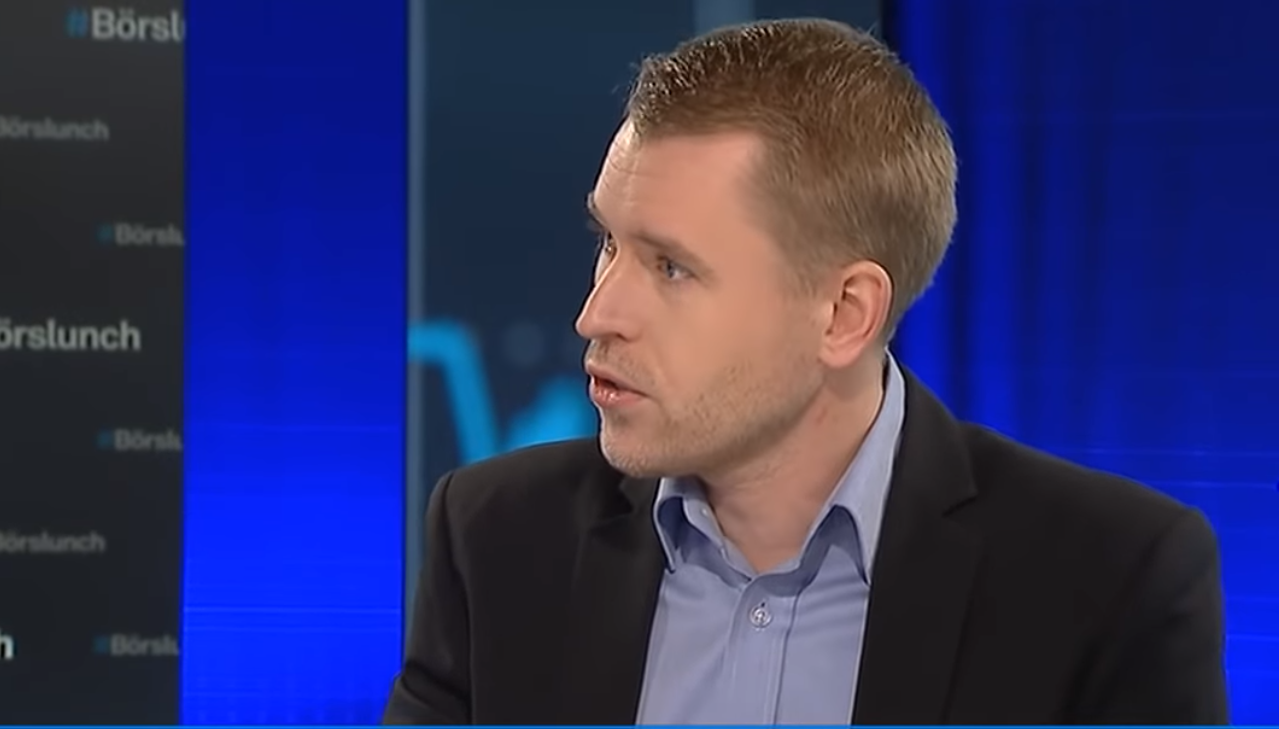Analys från DailyFX
USD/CAD Technical Analysis: Looking Set To Retest Channel Ceiling
Talking Points:
-USD/CAD Technical Strategy: Looks Poised For Move To Channel Resistance Near 1.3700
–USD/CAD Fundamental Support Could Keep Trend Going
–USD/CAD Pattern Appears Incomplete Towards US Dollar Strength
Quick Fundamental Take:
The Canadian Dollar was the darling of G10FX ahead of the December FOMC meeting. The Canadian Dollar was benefitting from the positive correlation of Crude Oil as Oil was strengthening in the wake of the OPEC accord with some non-OPEC members to cut production and bring balance to the oversupply that permeated the energy market from 2014-2016.
However, we’ve recently seen a disappointing economic data from Canada, which has aligned with the stronger USD and has had more focus than the continued rise in the price of Oil. In addition to the traditional fundamental focuses, there is concern about an increase in border tax increases and renegotiated trade contracts that will come with the new U.S. Presidential Administration in 2017.
However, the December FOMC meeting nearly brought two rate hikes to the market, which has lifted the USD and the Dollar Index to the highest levels since December 2002. The twohike view come from the actual hike that was completely priced in per the Fed Funds Futures data on Bloomberg as well the 25 bp increase in the median Dot of the FOMC Dot Plot.
Since this “two-hike” event, the price of USD/CAD has risen by over 4% and looks poised to continue higher if US data and yields continue stronger and rising.
Technical Focus:
D1 USD/USD Chart: Looking Set To Retest Channel Ceiling
Chart Created by Tyler Yell, CMT
The most important component on the USD/CAD chart is the strong bounce off of multiple levels of support all near 1.31/3075. This price zone combined the 200–day moving average at 1.3087, the 61.8% Fibonacci retracement of the August – November price range, the Ichimoku cloud base, and the combination of the Modified Schiff Pitchfork / Trendline support drawn off key pivots of the May, June, and August.
Looking above, you can see we aggressively moved back in the bullish channel. We’re pushing toward the top of the channel near 1.3700, and the trend looks ready to continue into 2017 as momentum per RSI(5) on the Daily Chart is showing an early move into overbought, which could indicate we’re in the midst of a stronger move than previous uptrends.
As of this writing, we’re also near the November high before the OPEC accord announcement where CAD was weakened to the point that USD/CAD was trading at 1.3588, which is near the 50% Fibonacci retracement of the 2016 price range. The anticipated break of this level opens up the anticipated channel top and the 61.8% of the 2016 range at 1.3838.
Key Short-Term Levels as of Friday, December 27, 2016
For those interested in shorter-term levels of focus than the ones above, these levels signal important potential pivot levels over the next 48-hours.
T.Y.
Interested in learning more about markets and trading strategies? Join Tyler and other DailyFX analysts for FREE every trading by registering HERE!
Analys från DailyFX
EURUSD Weekly Technical Analysis: New Month, More Weakness
What’s inside:
- EURUSD broke the ‘neckline’ of a bearish ‘head-and-shoulders’ pattern, April trend-line
- Resistance in vicinity of 11825/80 likely to keep a lid on further strength
- Targeting the low to mid-11600s with more selling
Confidence is essential to successful trading, see this new guide – ’Building Confidence in Trading’.
Coming into last week we pointed out the likelihood of finally seeing a resolution of the range EURUSD had been stuck in for the past few weeks, and one of the outcomes we made note of as a possibility was for the triggering of a ’head-and-shoulders’ pattern. Indeed, we saw a break of the ’neckline’ along with a drop below the April trend-line. This led to decent selling before a minor bounce took shape during the latter part of last week.
Looking ahead to next week the euro is set up for further losses as the path of least resistance has turned lower. Looking to a capper on any further strength there is resistance in the 11825-11880 area (old support becomes new resistance). As long as the euro stays below this area a downward bias will remain firmly intact.
Looking lower towards support eyes will be on the August low at 11662 and the 2016 high of 11616, of which the latter just happens to align almost precisely with the measured move target of the ‘head-and-shoulders’ pattern (determined by subtracting the height of the pattern from the neckline).
Bottom line: Shorts look set to have the upperhand as a fresh month gets underway as long as the euro remains capped by resistance. On weakness, we’ll be watching how the euro responds to a drop into support levels.
For a longer-term outlook on EURUSD, check out the just released Q4 Forecast.
EURUSD: Daily
—Written by Paul Robinson, Market Analyst
You can receive Paul’s analysis directly via email bysigning up here.
You can follow Paul on Twitter at@PaulRobinonFX.
Analys från DailyFX
Euro Bias Mixed Heading into October, Q4’17

Why and how do we use IG Client Sentiment in trading? See our guide and real-time data.
EURUSD: Retail trader data shows 37.3% of traders are net-long with the ratio of traders short to long at 1.68 to 1. In fact, traders have remained net-short since Apr 18 when EURUSD traded near 1.07831; price has moved 9.6% higher since then. The number of traders net-long is 15.4% lower than yesterday and 16.4% higher from last week, while the number of traders net-short is 0.4% higher than yesterday and 10.5% lower from last week.
We typically take a contrarian view to crowd sentiment, and the fact traders are net-short suggests EURUSD prices may continue to rise. Positioning is more net-short than yesterday but less net-short from last week. The combination of current sentiment and recent changes gives us a further mixed EURUSD trading bias.
— Written by Christopher Vecchio, CFA, Senior Currency Strategist
To contact Christopher Vecchio, e-mail cvecchio@dailyfx.com
Follow him on Twitter at @CVecchioFX
To be added to Christopher’s e-mail distribution list, please fill out this form
Analys från DailyFX
British Pound Reversal Potential Persists Heading into New Quarter

Why and how do we use IG Client Sentiment in trading? See our guide and real-time data.
GBPUSD: Retail trader data shows 38.2% of traders are net-long with the ratio of traders short to long at 1.62 to 1. In fact, traders have remained net-short since Sep 05 when GBPUSD traded near 1.29615; price has moved 3.4% higher since then. The number of traders net-long is 0.1% higher than yesterday and 13.4% higher from last week, while the number of traders net-short is 10.6% lower than yesterday and 18.3% lower from last week.
We typically take a contrarian view to crowd sentiment, and the fact traders are net-short suggests GBPUSD prices may continue to rise. Yet traders are less net-short than yesterday and compared with last week. Recent changes in sentiment warn that the current GBPUSD price trend may soon reverse lower despite the fact traders remain net-short.
— Written by Christopher Vecchio, CFA, Senior Currency Strategist
To contact Christopher Vecchio, e-mail cvecchio@dailyfx.com
Follow him on Twitter at @CVecchioFX
To be added to Christopher’s e-mail distribution list, please fill out this form
-
Analys från DailyFX10 år ago
EUR/USD Flirts with Monthly Close Under 30 Year Trendline
-

 Marknadsnyheter2 år ago
Marknadsnyheter2 år agoUpptäck de bästa verktygen för att analysera Bitcoin!
-
Marknadsnyheter5 år ago
BrainCool AB (publ): erhåller bidrag (grant) om 0,9 MSEK från Vinnova för bolagets projekt inom behandling av covid-19 patienter med hög feber
-
Analys från DailyFX12 år ago
Japanese Yen Breakout or Fakeout? ZAR/JPY May Provide the Answer
-

 Marknadsnyheter2 år ago
Marknadsnyheter2 år agoDärför föredrar svenska spelare att spela via mobiltelefonen
-
Analys från DailyFX12 år ago
Price & Time: Key Levels to Watch in the Aftermath of NFP
-
Analys från DailyFX8 år ago
Gold Prices Falter at Resistance: Is the Bullish Run Finished?
-

 Nyheter7 år ago
Nyheter7 år agoTeknisk analys med Martin Hallström och Nils Brobacke












